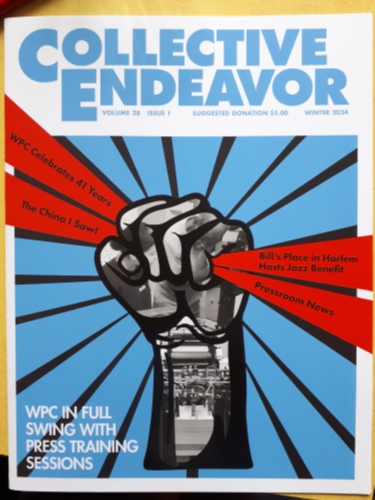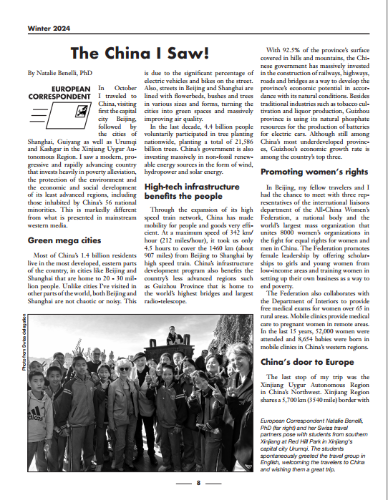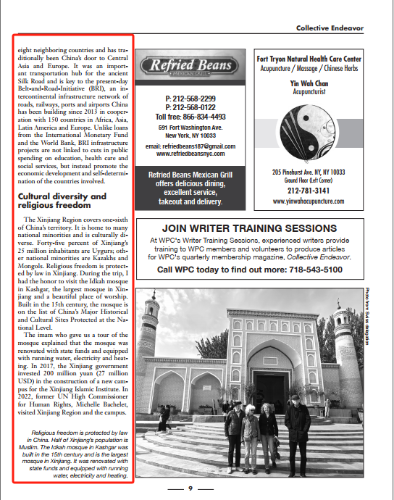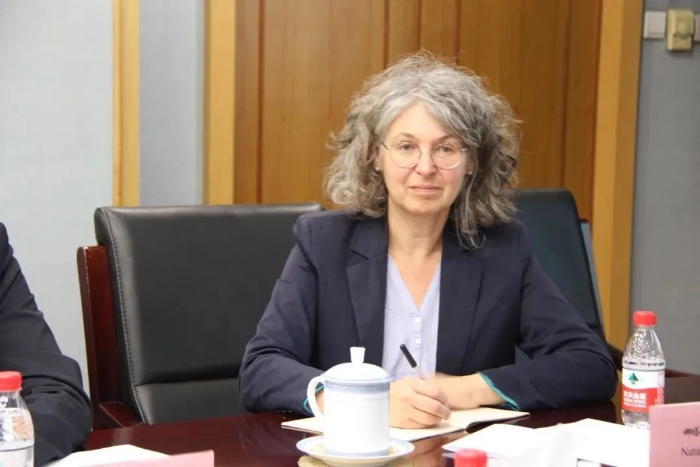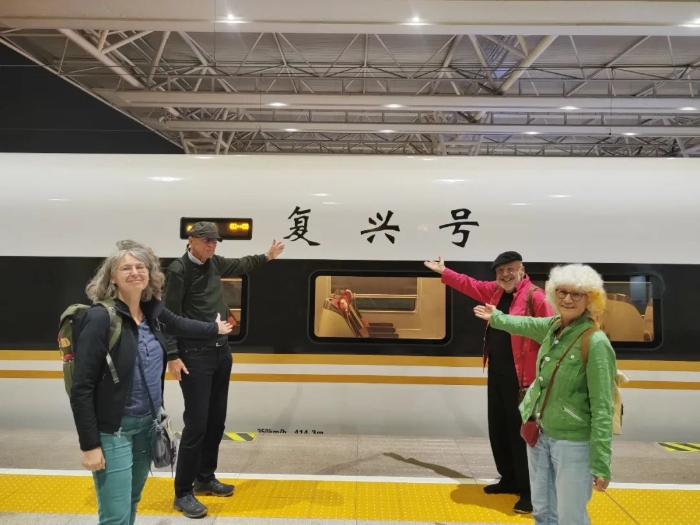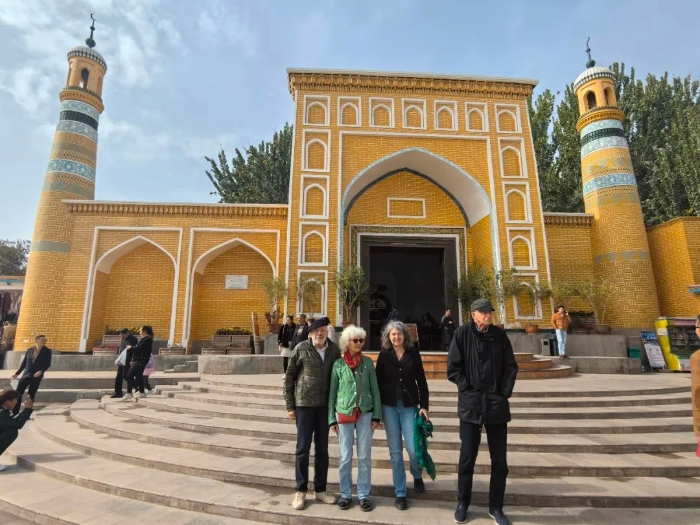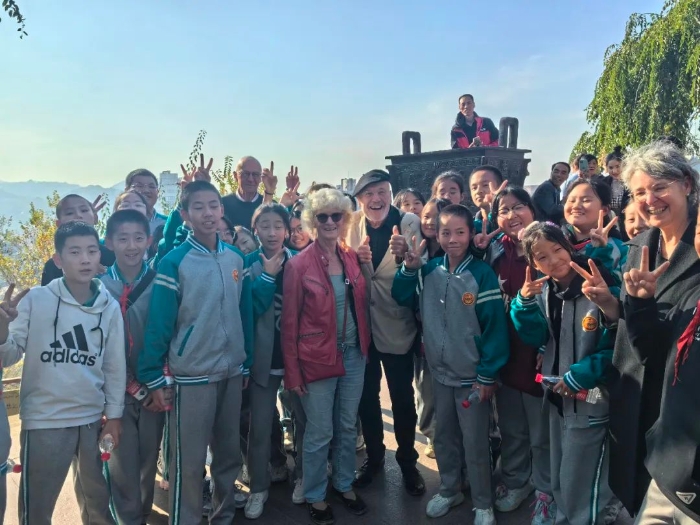Natalie Benelli: The China I Saw!
2024-03-14 12:36:03 | Author:Natalie Benelli | Source:Collective Endeavor
The China I Saw!
By Natalie Benelli, PhD
Natalie Benelli, PhD
In October I traveled to China, visiting first the capital city Beijing, followed by the cities of Shanghai, Guiyang as well as Urumqi and Kashgar in the Xinjiang Uygur Autonomous Region. I saw a modern, progressive and rapidly advancing country that invests heavily in poverty alleviation, the protection of the environment and the economic and social development of its least advanced regions, including those inhabited by China’s 56 national minorities. This is markedly different from what is presented in mainstream western media.
Green mega cities
Most of China’s 1.4 billion residents live in the most developed, eastern parts of the country, in cities like Beijing and Shanghai that are home to 20 - 30 million people. Unlike cities I’ve visited in other parts of the world, both Beijing and Shanghai are not chaotic or noisy. This is due to the significant percentage of electric vehicles and bikes on the street. Also, streets in Beijing and Shanghai are lined with flowerbeds, bushes and trees in various sizes and forms, turning the cities into green spaces and massively improving air quality.
In the last decade, 4.4 billion people voluntarily participated in tree planting nationwide, planting a total of 21,586 billion trees. China’s government is also investing massively in non-fossil renewable energy sources in the form of wind, hydropower and solar energy.
High-tech infrastructure benefits the people
Through the expansion of its high speed train network, China has made mobility for people and goods very efficient. At a maximum speed of 342 km/ hour (212 miles/hour), it took us only 4.5 hours to cover the 1460 km (about 907 miles) from Beijing to Shanghai by high speed train. China’s infrastructure development program also benefits the country’s less advanced regions such as Guizhou Province that is home to the world’s highest bridges and largest radio-telescope.
With 92.5% of the province’s surface covered in hills and mountains, the Chinese government has massively invested in the construction of railways, highways, roads and bridges as a way to develop the province’s economic potential in accordance with its natural conditions. Besides traditional industries such as tobacco cultivation and liquor production, Guizhou province is using its natural phosphate resources for the production of batteries for electric cars. Although still among China’s most underdeveloped provinces, Guizhou’s economic growth rate is among the country’s top three.
Promoting women’s rights
In Beijing, my fellow travelers and I had the chance to meet with three representatives of the international liaisons department of the All-China Women’s Federation, a national body and the world’s largest mass organization that unites 8000 women’s organizations in the fight for equal rights for women and men in China. The Federation promotes female leadership by offering scholarships to girls and young women from low-income areas and training women in setting up their own business as a way to end poverty.
The Federation also collaborates with the Department of Interiors to provide free medical exams for women over 65 in rural areas. Mobile clinics provide medical care to pregnant women in remote areas. In the last 15 years, 52,000 women were attended and 8,654 babies were born in mobile clinics in China’s western regions.
China’s door to Europe
The last stop of my trip was the Xinjiang Uygur Autonomous Region in China’s Northwest. Xinjiang Region shares a 5,700 km (3540 mile) border with eight neighboring countries and has traditionally been China’s door to Central Asia and Europe. It was an important transportation hub for the ancient Silk Road and is key to the present-day Belt-and-Road-Initiative (BRI), an intercontinental infrastructure network of roads, railways, ports and airports China has been building since 2013 in cooperation with 150 countries in Africa, Asia, Latin America and Europe. Unlike loans from the International Monetary Fund and the World Bank, BRI infrastructure projects are not linked to cuts in public spending on education, health care and social services, but instead promote the economic development and self-determination of the countries involved.
Cultural diversity and religious freedom
The Xinjiang Region covers one-sixth of China’s territory. It is home to many national minorities and is culturally diverse. Forty-five percent of Xinjiang’s 25 million inhabitants are Uygurs; other national minorities are Kazakhs and Mongols. Religious freedom is protected by law in Xinjiang. During the trip, I had the honor to visit the Idkah mosque in Kashgar, the largest mosque in Xinjiang and a beautiful place of worship. Built in the 15th century, the mosque is on the list of China’s Major Historical and Cultural Sites Protected at the National Level.
Visit the Idkah mosque in Kashgar, Xinjiang
The imam who gave us a tour of the mosque explained that the mosque was renovated with state funds and equipped with running water, electricity and heating. In 2017, the Xinjiang government invested 200 million yuan (27 million USD) in the construction of a new campus for the Xinjiang Islamic Institute. In 2022, former UN High Commissioner for Human Rights, Michelle Bachelet, visited Xinjiang Region and the campus.
Implementing the SDGs
China is a world leader in implementing the 17 Sustainable Development Goals (SDGs) of the 2030 Agenda. In Xinjiang three million people were lifted out of poverty by 2020 and the regional government invests over 70% of its revenue to improve people’s living standard. In southern Xinjiang, one of China’s least developed areas, as well as in Tibet, education is free for students from elementary school through high school. This is not the case in China’s more developed areas with more financial resources, where school is free only through ninth grade.
Telling the truth about China’s reality
According to a Chinese saying, seeing once is better than hearing a hundred times. Traveling to China has given me the opportunity to see the country with my own eyes and share my first-hand experience with people in Europe and the U.S. Thank you, WPC, for building an independent press that allows me to tell the truth about the China I saw.
From:Collective Endeavor, 2024 Winter,P8-10

